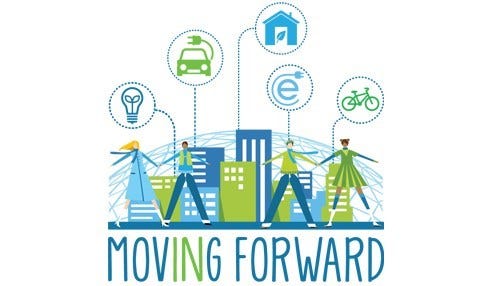Moving Forward 3.0 Deadline Extended for Critical Lake County Projects
 Moving Forward IHCDA
Moving Forward IHCDA
Subscriber Benefit
As a subscriber you can listen to articles at work, in the car, or while you work out. Subscribe NowThe Indiana Housing and Community Development Authority (IHCDA), in partnership with Energy Systems Network, is extending its Request For Qualifications (RFQ) on the newest iteration of the Moving Forward Program to July 10. Moving Forward creates affordable housing that ties in important cost savings in the areas of transportation and energy while increasing the quality of life for residents based on location and other factors.
Governor Eric Holcomb issued a disaster declaration in East Chicago earlier this year after some Lake County residents were forced from their homes because of lead contamination. In it, he asked the IHCDA to develop new rental housing options. Moving Forward 3.0 is expected to break ground on the new projects in 2018, adding more new technology and building on insights from the first two Moving Forward plans already underway around the state.
IHCDA Executive Director Jacob Sipe says the Lake County projects are a perfect fit with the Moving Forward concept of creating energy-efficient affordable housing and transportation opportunities while easing the burdens that increase poverty among residents.
“For example, Lake County has five transportation stops for the South Shore (rail) Line, so our goal will be to develop as close to walking distance from these stops as possible. We also have three colleges and universities that are very active there and the opportunity for residents to continue career development” will play a role in housing placement. Sipe adds that recognizing that single-parent families need to be close to schools is also a key site consideration.
Sipe says the Lake County projects require a bit of a different focus from the Moving Forward 1.0 and 2.0 iterations. The 1.0 locations are in Bloomington and Fort Wayne, while the 2.0 sites are in Indianapolis and Monticello. When the first two projects kicked off, organizers had not chosen locations and siting was part of the process. At least one of the Lake County locations will be strategically chosen in advance.
Because one of the locations for 3.0 will be pre-determined, Sipe and others are bringing together local residents as part of an advisory selection committee. Extending the RFQ deadline not only allows developers to refine proposals but for the advisory committee to solidify.
“In August we’ll have the presentations by developers, then in November, Energy Systems Network will once again host a two-day workshop with subject matter experts. We’re continuing to engage the community in this process. While we have these great minds in public policy and housing and transportation and energy and poverty here, we’re going to put them right across the table from the residents. We think we’ll get even better ideas and new ideas that will be sparked, challenging our developers on stretch goals.”
Sipe maintains the resident committee is critical to the 3.0 process in East Chicago because it’s more than a great idea or a white paper – the project is filling a crucial need. And as each new Moving Forward phase kicks off, elements like residents’ input continue to be folded into the model, refining the approach and speeding up timelines.
One of the factors that change the fastest is the new home technology, according to Sipe. He says Purdue University has become a valuable partner to project developers by providing technical assistance and helping all the partners understand smart home technologies as well as the behaviors that go along with them.
Moving Forward is gaining some attention as it continues to grow. Sipe recently spoke to housing authorities in Tennessee about the program. He believes the basic ideas behind the Moving Forward model of integrating housing, energy, transportation and education opportunities can work for many types of developments, from low-income housing all the way up to home ownership.
“We definitely want Moving Forward to be replicated, not only in the affordable housing industry, but also in the market rate industry as well. What we’re working very hard on is developing that model that can be replicated, regardless of whether you’re in an urban or rural community and regardless of whether it’s affordable or market rate housing.”
